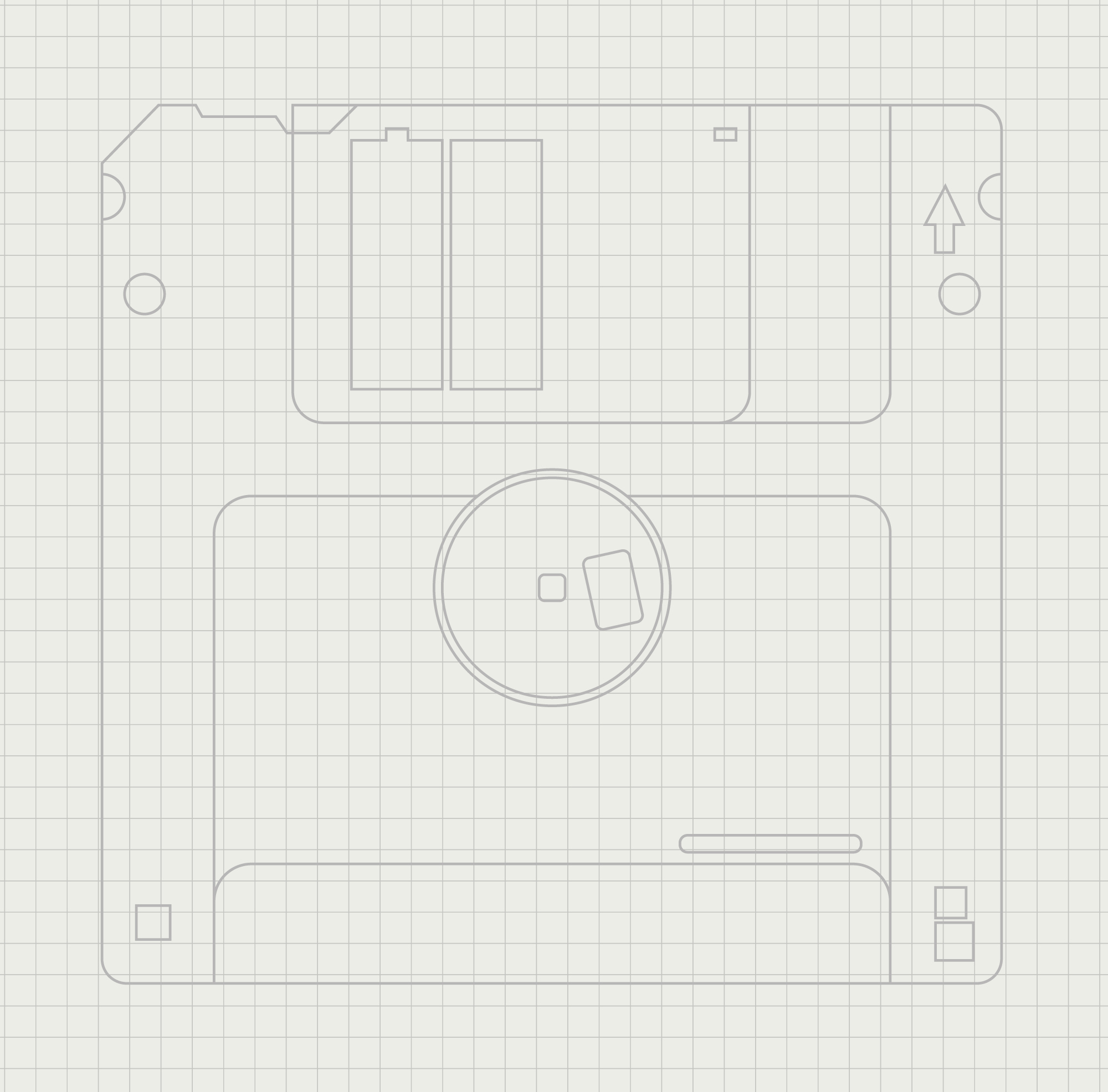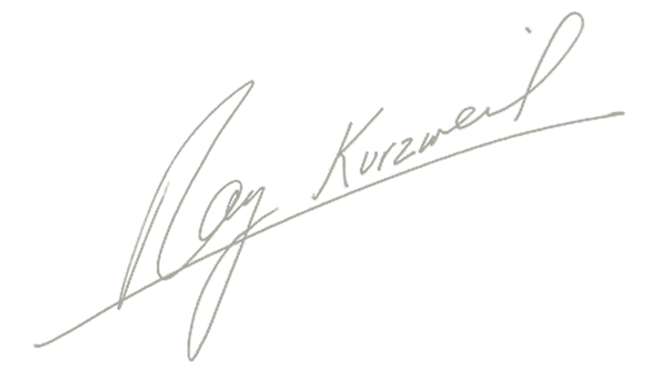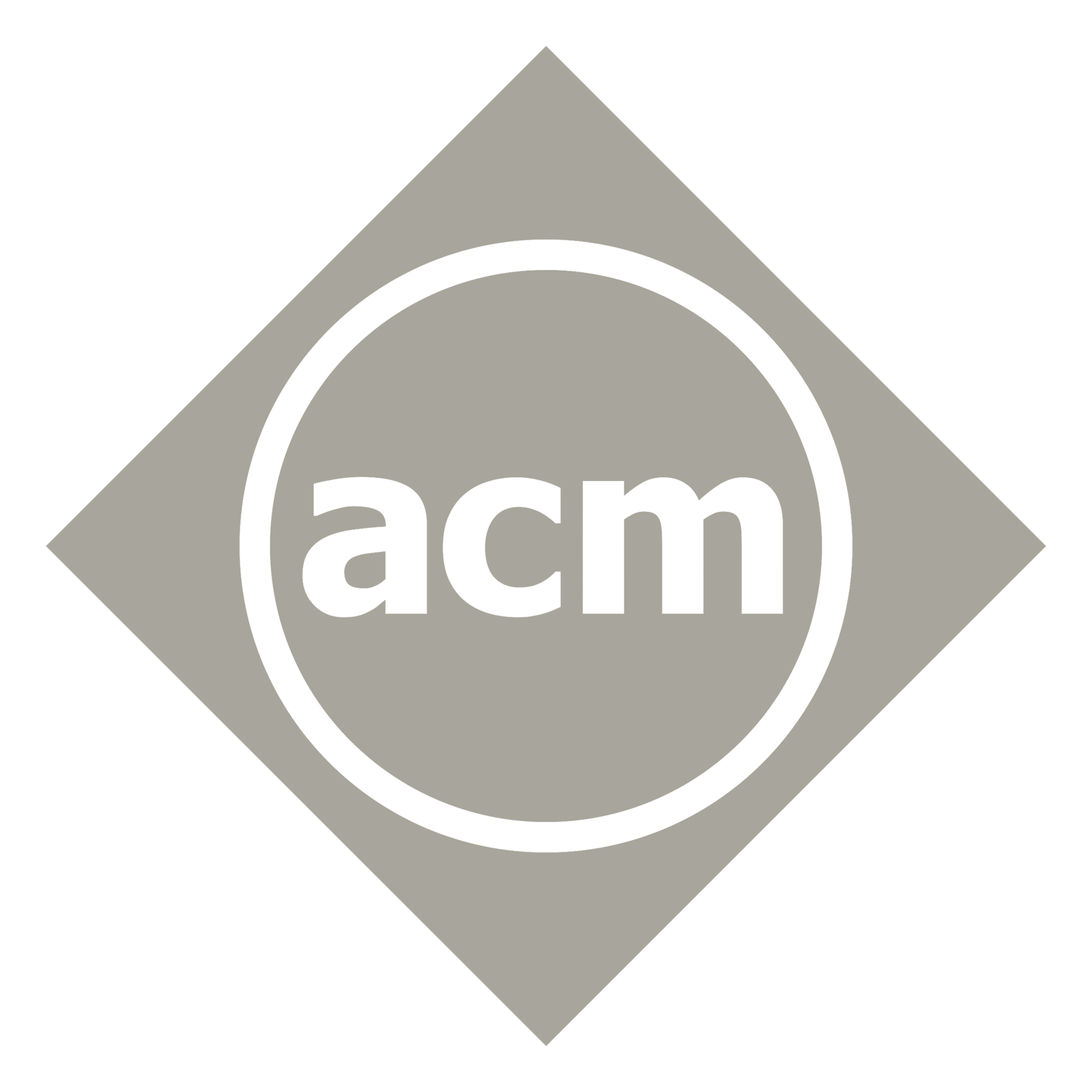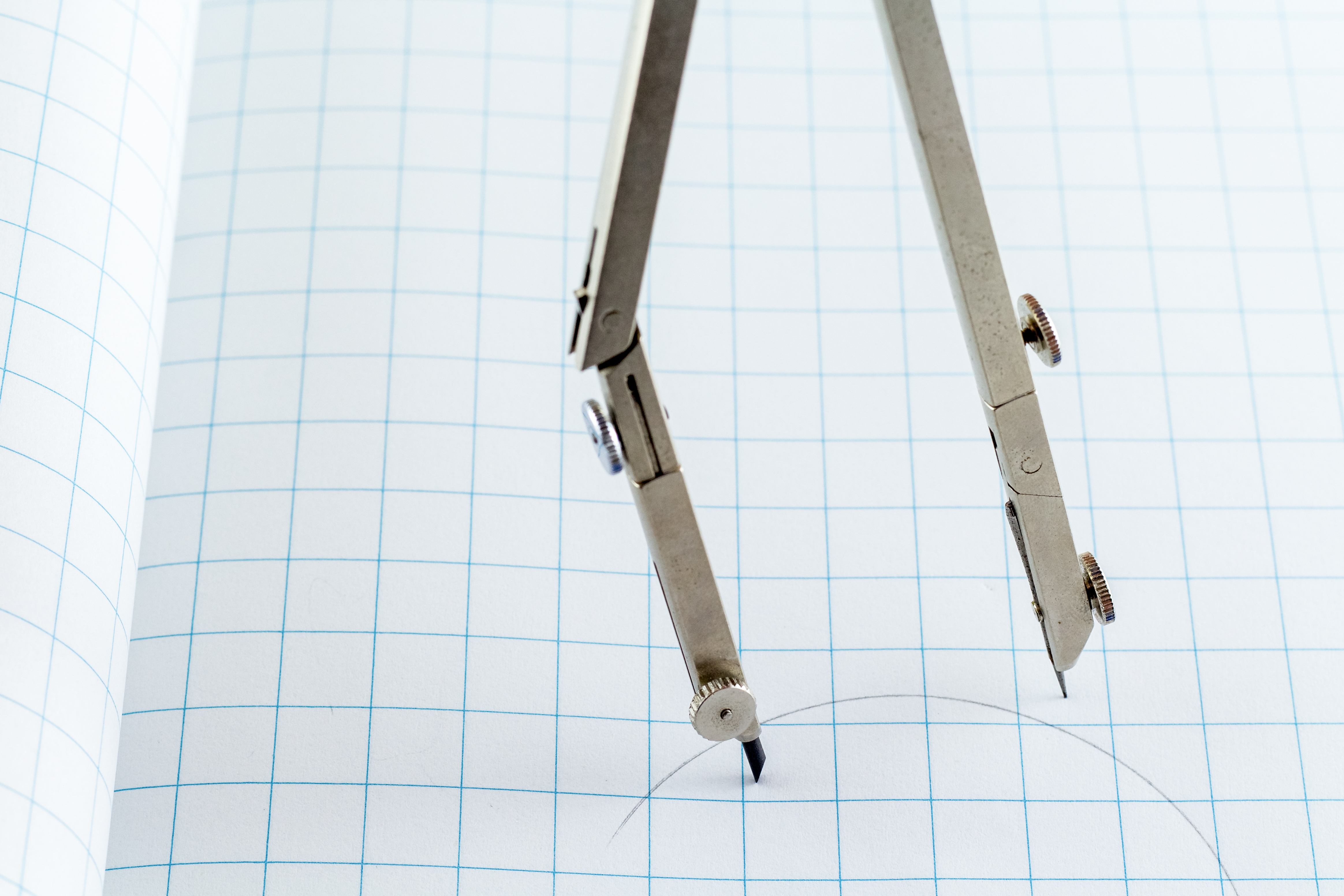feature storyfrom | the Assoc. of Computing Machinery2016the People of ACM interview
July 1, 2022

from the interview | quote from Ray Kurzweil
Ultimately digital, virtual environments will be as realistic as real reality. Some will be re-creations of earthly environments — but some will be new, fantastic ones limited only by our imagination. That’s called virtual reality.
There’s also augmented reality: where digital devices overlay virtual people, information, maps, media, sights, and sounds — directly on top of your actual view of the world. For example: if you’re looking through the camera of your smart-phone, or through augmented reality eye-wear — you can see images projected onto your foreground + background that aren’t really there.
Well, they’re not there in the physical sense, but these virtual overlays enhance + intensify your physical experience. This is the blending of real and virtual that I’ve been predicting. So you can sit in your real living room — but virtually see your friend hanging-out on the couch with you, even if she is 100s of miles away.
— Ray Kurzweil

organization: the Association of Computing Machinery
story title: profile + interview with Ray Kurzweil
column: People of the Association of Computing Machinery
date: May 3, 2016
https://www.acm.org/articles/people-of-acm/2016/raymond-kurzweil
 — about the Association of Computing Machinery —
— about the Association of Computing Machinery —
We bring together educators, researchers, and professionals in the field of computers: to inspire dialogue, share resources, and deal with challenges. We’re the world’s largest computing society. We advance strong leaders, promote high standards, and award technical excellence. We provide life-long learning, career development, and professional networking to our members.
Founded at the dawn of the computer age, the association has international members all over the globe, with councils in Europe, India, and China. We raise awareness of computing’s important technical, educational, and social issues around the world. We sponsor publications, advocacy, and events.
Shape the future of computing: for over 70 years, we’ve helped computing professionals be their most creative, connect to peers, and see what’s next. Join us means to be the best you can be.
— about the column —
People of the Association of Computing Machinery column highlights unique, scientific accomplishments and compelling personal stories of members making a difference in the world of computer science. We feature inventors and scientists to engage + inspire the community.
Be creative. Stay connected. Keep inventing.
on the web | pages
Assoc. of Computing Machinery | home
Assoc. of Computing Machinery | resources
Assoc. of Computing Machinery | magazines
Assoc. of Computing Machinery | headlines in computing
Assoc. of Computing Machinery | list of awards
Assoc. of Computing Machinery | YouTube channel


award | no. 1
organization: Association of Computing Machinery
award title: Grace Murray Hopper Award
recipient: Ray Kurzweil
award year: 1978
about the award | Awarded to a young computer professional for an important technical or service contribution, with a prize of $35,000 provided by Microsoft co. The candidate must have been 35 years old or younger at the time.
award | no. 2
organization: Association of Computing Machinery
award title: Fellow of the Assoc. of Computing Machinery
recipient: Ray Kurzweil
award year: 1994
about the award | Awarded to the most prestigious members of the association: recognized for their outstanding accomplishments in computing and information technology — plus outstanding service to the community.

— special interview with Ray Kurzweil —
from: the Association of Computing Machinery
question | The Kurzweil Reading Machine was introduced to an enthusiastic public reception in 1976. What was your inspiration for developing a machine that could read text aloud to the blind? What was the greatest technical challenge on that project and how did you overcome it?
Ray Kurzweil | The most significant challenge was developing OCR that could recognize any type style and also deal with vagaries of print such as proportional spacing and touching and broken letters. The state of the art at the time was that OCR could recognize a single type front typed with fixed spacing. My team and I developed software that could recognize the abstract invariant features of letters. It was an example of pattern recognition, which has always been my primary interest. My thesis has been that human intelligence is primarily based on our ability to recognize patterns. This technology was a solution in search of a problem in that we did not have a good idea what it would be good for.
Around 1974, I happened to sit next to a blind gentleman on a plane flight who explained to me that his blindness was not a limitation except for one thing, namely his inability to read ordinary print without a sighted assistant. This encounter inspired me to devote my Omni-font OCR to the blind reading problem. We needed two other technologies which also had not existed: text-to-speech synthesis (going from recognized text to spoken words) and flatbed scanning using the new CCD chips that had just been introduced. We developed these two new technologies and introduced the Kurzweil Reading Machine on January 13, 1976. We worked extensively with a team of eight blind engineers and scientists from the National Federation of the Blind in order to perfect the product.
Ray Kurzweil | What role did computer science play in your development of the first Kurzweil music synthesizer in 1983? You recently returned to Kurzweil Music Systems as a Chief Strategy Officer for the company. How are recent technological advances improving the quality of the sound that these music systems produce?
answer | Although samplers existed in the early 1980s (musical instruments that could play back recorded sounds), these were not adequate to recreate the response of a piano. It was not possible to have a recorded sample for every loudness level of every note for the entire duration of a note so samplers would loop the last waveform as the note decayed. If you loop one waveform, all the overtones become perfect multiples of the fundamental frequency of the note. In a piano, however, the overtones are not perfect multiples of the fundamental frequency, they are what is called enharmonic and that gives the piano its unique sound.
Moreover, if you hit a key harder, it is not just louder; the entire time-varying frequency contour changes. As a result, we modeled what a piano does to sound using signal processing and pattern processing algorithms. The Kurzweil 250, which we introduced in 1984, was recognized as the first instrument that could realistically recreate the sound and feel of a grand piano. The latest challenge we are dealing with at Kurzweil Music is to realistically model the resonances of all the strings when the pedal is down. All several hundred strings interact with each other in complex ways but we feel that advanced signal processing can realistically recreate this effect.
question | In your current role as a Director of Engineering at Google, you are working to create a system that can search and process information in a fundamentally deeper way than is now the case. You have said that language is the vehicle for developing machines that can understand the meaning of ideas and concepts. Why is language so central to this effort, and how might a computer process concepts such as meaning and context?
Ray Kurzweil | The world is hierarchical in its structure. Evolution created the neo-cortex as a unique brain structure that could understand nature. The neocortex emerged 200 million years ago with mammals. Two million years ago we expanded the neo-cortex when we became humanoids. Our large foreheads contain the frontal cortex which added to the neo-cortex. We used this additional neo-cortex to create more levels of hierarchy so that we could master more abstract knowledge. This helped our humans to invent language (our first invention) and everything that followed: for example art, science, and technology. Language helps humans communicate a hierarchical idea from one person to another — so language is also naturally hierarchical. In 1000s of years of development that followed, humans have created a vast knowledge of language that envelops all of our thoughts and insights.
A recent math breakthrough now helps us to develop deep neural nets with dozens of levels that can understand the hierarchical structures found in images and in particular in language. We are moving from search being based just on keywords to search being based on the actual meaning of language.
question | Your predictions on how technology will impact the future have been considered prescient by many and controversial by others. Recently, you predicted that by the 2030s: shared, virtual environments will be immersive and actually feel real. Can you give us an example of what these environments might look like and what enabling technologies will make them possible?
Ray Kurzweil | There is a virtual and augmented reality revolution now getting started using external devices. By the 2030s we will be able to do this from within the nervous system. Nano-robots the size of blood cells will enter the brain through capillaries and provide the brain with signals as if they were coming from our real senses (eyes, ears, tactile sense, etc.). These nano-robots might communicate wirelessly with each other —- or with the cloud — and could provide an interactive virtual environment. In these virtual environments we will have a body which could be just like our body in real reality or could be different. A couple could exchange bodies for example in a virtual environment.
Ultimately these virtual environments will be as realistic as real reality. Some will be recreations of earthly environments and some will be new fantastic ones limited only by our imagination. We will also have augmented reality so that you can be in a real living room but have a friend sitting there on the couch with you even if she is hundreds of miles away. In the 2030s, she may in fact be an artificial intelligence with no physical counterpart.
about | Ray Kurzweil
by the Assoc. of Computing Machinery
Ray Kurzweil is a computer scientist and inventor. He is also an author who has gained wide attention for his predictions about how advances in technology will shape the future. He received ACM’s Grace Murray Hopper Award in 1978 for his invention of a computer-based machine that reads printed pages aloud to blind and low vision people. The Kurzweil Reading Machine, as it was called at the time, relied on Kurzweil’s invention of 2 component technologies, the charge coupled device — flat-bed scanner and a new text-to-speech synthesizer. The machine relied on Ray Kurzweil’s major advances in optical character recognition. He improved the technology behind omni-font OCR, Kurzweil developed a computer program that was capable of recognizing text written in any normal font.
The Kurzweil Reading Machine device weighed 80 pounds, shoots a beam of light across each printed page, converts the reflected light across each printed page, converts the reflected light into digital data that is analyzed by its built-in computer, and then transformed into synthetic speech. It is expected to make reading of all printed material possible for blind people, whose reading was previously limited to material translated into Braille. The machine would not have been possible without another achievement by Kurzweil, that is, a set of rules embodied in the mini-computer program by which printed characters of a wide variety of sizes and shapes are reliably and automatically recognized.
In the 1970s, he became a household name with his invention of an electronic music synthesizer that closely imitates the sounds of traditional musical instruments. His many honors include being named as an ACM Fellow and receiving the National Medal of Technology. Larry Page, CEO of Alphabet co. (Google’s parent company) hired Kurzweil to serve as a Director of Engineering at Google to develop a software system that understands human language — with groundbreaking new ways to manage info and search the web.
— notes —
* OCR is optical character recognition
* CCD is charge coupled device
ACM = the Assoc. of Computing Machinery